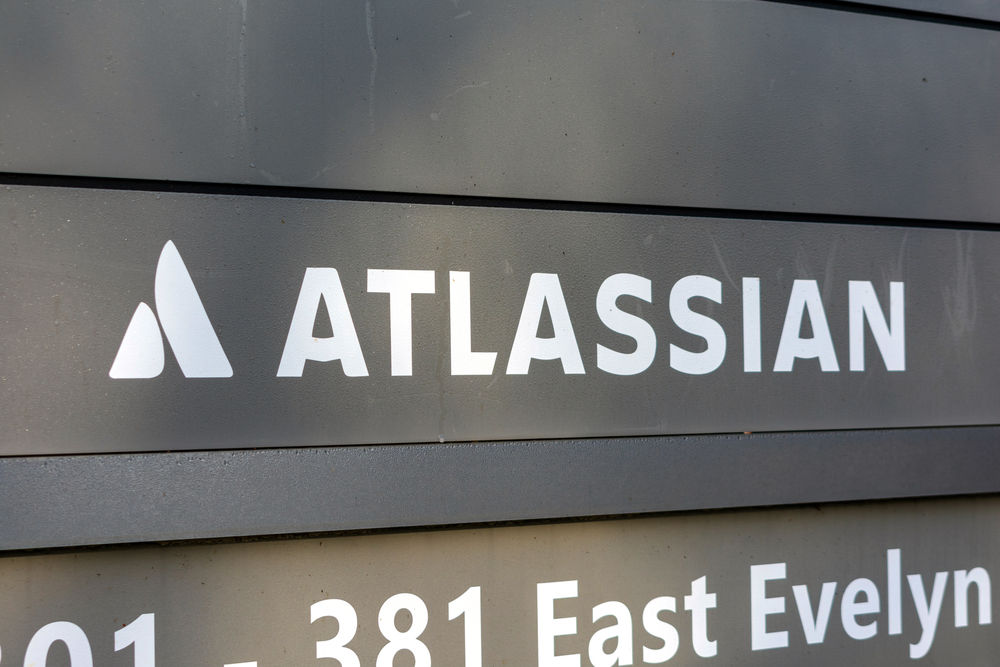On October 1, analysts at Raymond James upgraded Atlassian Corp (NASDAQ: TEAM) from Neutral to Buy, keeping their price target steady at $200.
Analyst Adam Tindle highlighted the growth potential of Atlassian’s cloud business, projecting mid-to-high 20% growth driven by acquisitions, a strong net revenue retention rate of 120%, and recent price increases of around 5%.
Tindle noted an uptick in job postings for software developers, suggesting a positive trend for Atlassian’s cloud performance.
Earlier on August 2, Goldman Sachs upgraded Atlassian from Neutral to Buy, raising the price target from $200 to $230.
Analyst Kash Rangan expressed confidence that the company’s transition to the cloud was “largely de-risked” and that it could deliver on its guidance for cloud growth and margin improvements.
However, some analysts remain cautious due to Atlassian’s weaker-than-expected revenue guidance and concerns about macroeconomic uncertainties impacting key growth drivers like seat expansion and customer retention.
Atlassian is undergoing significant leadership transitions. Co-founder and co-CEO Scott Farquhar stepped down on August 31, and the company is searching for a new Chief Revenue Officer after the departure of Chief Sales Officer Kevin Egan.
These changes come as Atlassian aims to strengthen its enterprise sales strategy and evolve its go-to-market approach to better serve large organizations.
Atlassian’s strong financial performance
Despite recent hurdles, Atlassian reported robust financial results for the fourth quarter of fiscal year 2024.
Total revenue reached $1.13 billion, a 20% increase year-over-year.
The cloud segment was a major contributor, with revenue growing 31% to $1.07 billion.
The company now serves over 300,000 customers, including 45,842 generating more than $10,000 in annual cloud revenue—a segment that grew by 18%.
Atlassian’s non-GAAP earnings per share were $0.66, beating expectations by $0.06. Operating income on a non-GAAP basis was $222 million, with an operating margin of 20%.
Cash flow from operations stood at $426 million, and free cash flow was $413 million.
However, GAAP operating margin was negative at (6%), influenced by increased investments in research and development and sales efforts to capture more enterprise customers.
Atlassian fiscal year 2025 guidance
Looking ahead, Atlassian forecasts a revenue growth of approximately 16% for fiscal year 2025, with cloud revenue expected to grow around 23%.
The company cited an uncertain macroeconomic environment and potential execution risks in its evolving enterprise sales strategy.
Gross margins are projected to remain stable at approximately 81% GAAP and 83.5% non-GAAP, while non-GAAP operating margin is anticipated to be around 21.5%.
Atlassian stock valuation
The stock is currently trading at an enterprise value-to-forward revenue multiple of about 8x, higher than the information technology sector average of 3x.
While Atlassian’s growth prospects justify a premium valuation to some extent, concerns about decelerating revenue growth and profitability have some investors questioning whether the current price accurately reflects future potential.
The company’s price-to-earnings ratio is also elevated compared to industry peers.
Considering Atlassian’s strategic moves toward enterprise expansion, robust product innovations, and the challenges posed by leadership transitions and competitive pressures, the stock’s future performance remains intriguing.
To understand how these fundamental factors are impacting investor sentiment and the stock’s momentum, let’s examine the technical aspects to assess where Atlassian’s share price might be headed next.
Atlassian stock: bears in control in 2024
Having fallen close to 75% from above $440 levels to almost $110 levels between late 2021 and late 2022, Altassian’s stock saw a strong bounce back of over 100% in 2023.
Source: TradingView
However, the stock again lost upward momentum as it entered 2024 and has fallen more than 33% this year so far.
The stock remains weak on long and medium-term charts, but the silver lining for bulls has been it not falling below its long-term support near $128 levels.
Hence, investors who like analysts at Raymond James are bullish on the company can initiate a small long position at current levels with a stop loss at $125.8.
They can further add to their position once the stock gives a daily closing above its 100-day moving average which is currently at $165.9.
Traders who want to take advantage of the stock being on the long-term charts can initiate a fresh short position above $165, with a stop loss above the recent swing high near $186. If the bearish control remains intact, the stock can again retest the $135 level.
The post Raymond James sees opportunity in Atlassian’s cloud business: should you invest? appeared first on Invezz

